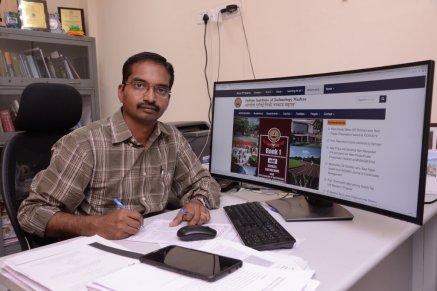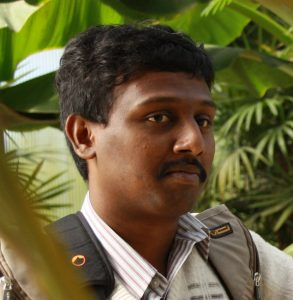Project
This center aims at developing a state of art Li-S facility, out of which Li-S battery with following specifications are expected.
- Li-S battery with a specific capacity of 1000 mAh g-1 at 0.1C rate.
- Li-S battery capable of operating at higher C-rates (up to 2C).
- Li-S battery with a cycle life of above 500 cycles with at least 90% retention.
- 2.1 V 1Ah Li-S Pouch Cells
As mentioned earlier, PSCs are sensitive to moisture, oxygen, etc. at the Earth’s surface. Taking advantage of the extremely dry conditions of space, moisture/oxygen degradation of perovskite solar cells can be alleviated. This project aims to investigate the stability of PSCs under AM 1.5 G as well as rapidly fluctuating wide temperature range and vacuum (conditions similar to space) for prolonged duration.
PSCs will be constructed using already existing materials and the materials that will be newly synthesized. However, the scale-up synthesis, solubility, hydrophobicity, morphology, alignment of energy levels, conductivity and long-term stability of HTMs, besides the detrimental effect of PSC devices on moisture, oxygen, light and temperature, are all important issues that will be addressed.
The design of HTMs includes core-π-expanded 3D analogs of spiro-OMeTAD. The molecular skeletons of this type are aimed to be synthesized by simple metal-free oxidative cyclization method. The HTMs will be thoroughly characterized by routine techniques. DFT calculations on these molecules will be performed by PI’s group and using continuum model by IBETM to elucidate the excited and ground state photophysical properties. The potential HTMs and ETMs obtained will be used to fabricate HOPV cells, testing and property evaluation.
Li-S Battery (WP-1)
- Li-S battery with a specific capacity of 1000 mAh g-1 at 0.1C rate
- Li-S battery capable of operating at higher C-rates (up to 2C)
- Li-S battery with a cycle life of above 500 cycles with at least 90% retention
- 2.1 V 1Ah Li-S Pouch Cells
Perovskite Solar Cells (WP-2)
- Robust active-layer HTMs for perovskite solar cells
- Trace-metal impurity-free HTMs with improved hydrophobicity and atmospheric/UV stability
- Efficient perovskite solar cells with power conversion efficiencies greater than 10% under AM 1.5 conditions
Infrastructure necessary for housing the instruments is identified (MSRC – Room number 203)
Ordering of equipment is in process
Chemicals and necessary consumables are ordered
Advisory council is formed based on approval
Monthly discussion with all the team members is in progress
PI and the team members have started working on the project schemes
Collaborations
International Collaborators
- Prof. Tahsin J. Chow , NTU, Taipei link
- Prof. P. Ajayan - Rice University link
- Prof. Hongxia Wang - Queensland University of Technology link
- Prof. Yuan Jay Chang - Ming Chi University of Technology link
- Prof. Vijay K. Ramani - Washington University link
- Prof. Noriyoshi Matsumi - JAIST link
- Prof. Murugan Natarajan Arul - KTH link
- Prof. Timo Jacob - University of Ulm, Germany link
Industrial collaborations
- Inventus Bioenergy (P) Ltd is identified as a potential industrial collaborator
- High Energy Batteries
- Oil and Natural Gas Corporation
- RCI, Hyderabad
International education programs
- Joint PhD programs with Washington University as well as Tung Hai University is being initiated
- Conference/Workshop is planned between the 10th and 15th month of start of the project involving SAEST/ISEAC with CoE funding
- PhD students will be encouraged to participate one international conference every year
Societal impact
Societal impact
Moving towards vehicles that run on batteries will aid in pollution abatement. The success of the project will yield the technology for the development of Li-S batteries with the concern of safety, performance and durability.
The technology is far cost effective due to the use of S rather than the use of expensive cobalt and nickel, unlike in commercial lithium ion batteries. The safety concern on the use of lithium metal will also be taken care of by our technology.
The use of high energy density Li-S batteries in electric vehicles will help to increase the driving range. Li-S batteries are projected to be environmentally sustainable in comparison to current lithium-ion batteries. The successful achievement of stable HOPV cells may potentially be helpful not only for space/extra-terrestrial applications but also for powering vehicles used for search and rescue missions, disaster relief, environmental monitoring, and agriculture and for balloons that fly like satellites but closer to the Earth. Combining this with secondary batteries that charge in daylight, may power night flights/operations as well.
Sustenance statement
- IP bank generated and startup endeavour would be used to tap funding beyond 5 years
- ISRO’s and NASA’s calls on technology development and capacity building shall be tapped to bring in further funds
- The proposed CoE can offer consultancy services in technologies related to Li-S and PSC, particularly to oil companies ONGC and HPCL whose focus is currently on batteries
- IBETM will collaborate constantly with the centre in writing the proposals to the funding agencies such as DEITY, MNRE, DRDO and ISRO for scaling up and commercialization of the joint prototype developed at the lab scale. The joint prototype developed via the collaboration of the IIT-Madras and IBETM will be pitched to the industries, venture capitalists and angel investors for commercialization thereby sustaining the product development and the collaboration with IIT-Madras
Technical/ Scientific Progress
New work done in the project
- Hole-transporting materials (HTMs) based on twisted bicarbazoles have been synthesized by Pd-catalyzed amination and Scholl oxidative coupling procedures in good yields. Gram quantities of them is achieved now using an optimized route. Small to large spiro-based HTMs have also been optimized and synthesized by a cost-efficient new route with improved yields. Scaling up of the spiro-products is in progress and expected to complete by the end of January. All these materials have been successfully characterized by NMR, HRMS, UV-vis, PL, TGA/DSC and CV techniques. Profs. Tahsin Chow and Yuan Jay-Chang, Department of Chemistry, Tunghai University, Taiwan were contacted in regard to testing the hole-transporting material’s potential in perovskite solar cells (PSCs). The samples from our lab on four parallel running schemes must be shipped to our collaborator’s group in Taiwan anytime in the next two weeks for solar cell device fabrication and characterization.
In the battery front, new organic redox molecules such as amine substituted quiones and sulfonated anthrarufin are developed for flow battery applications. Two manuscripts are submitted based on this work. In Li-S work, polymer coated Celgard separator and ordered mesoporous/microporous carbon host for S were developed to mitigate polysulfide shuttling and dissolution respectively. Polysulfide shuttling is the grand challenge faced in realizing successful Li-S battery technology.
Further, because of poor interaction of polar polysulfides with non-polar carbon matrix, polysulfide migrates into the electrolyte and increases the shuttle effect. Continuous shuttling of polysulphide from cathode to anode causes degradation of the capacity of Li-S due to self-discharge. Recent literature of Li-S batteries shows that metal oxides (TiO2, Fe2O3 , MgO, Co3O4, SiO2) offer plentiful polar active sites for polysulfides adsorption. However, their semiconducting nature results in ohmic polarization and consequently hampers the electrochemical performance. and So, in our work further to control the LPS confinement and conversion we have proposed an efficient cathode where partially exfoliated carbon nanotubes are used as sulfur host. Due to the high surface area, and high electrical conductivity, it serves as an efficient cathode material with high sulfur loading(>75%). In addition, we have also considered the effect of polar sites and designed cation deficient iron oxide (Fe2-xO3) nanostructure coated on the polytetrafluoroethylene ethylene coated carbon paper (GDL paper) as interlayer between separator and cathode, which can efficiently adsorb the polysulphides and effectively mitigates the shuttling effect. From our electrochemical studies, we have observed with PECNT/S cathode, which synergistically can result into a high capacity and stable lithium-sulfur batteries with efficient polysulphide shuttling control.
New Work Done in this Project:
We have carried out four work packages. The first one involves synthesis of redox active di-substituted hydroquinone derivatives and evaluating their chemical and electrochemical properties to understand their suitability for the redox flow battery applications. We have synthesized (single step) amine substituted hydroquinone derivatives (H2QDMA, H2QDEA, H2QPiP, H2QMOR, H2QPMe, H2Q4PMe and DM-H2QDMA) and successfully characterized them by NMR and Mass techniques (Fig. 1). The formal potential of synthesized compound was around 0.60 V vs. Ag/AgCl. To understand the suitability of the synthesized compound for flow battery applications, galvanostatic charge discharge (GCD) analysis was performed with V3+/ V2+ as anolyte. The battery delivered a discharge capacity of ~ 2 Ah L-1 (H2QDMA, Fig. 2), which faded with cycles. In shorter time scale, we believe gem diol formation and in longer time scale degradation of the quinones by Michael addition could be happening, leading to oligomerization/polymerization, which probably is the reason behind the capacity fade. To avoid the Michael addition, we have adopted tetra substituted the benzene core and prepared two new molecules H2Q4PMe and DM-H2QDMA. This work is under review after revision in the Journal of The Electrochemical Society.
Fig. 1. Molecular structures of redox active molecules
Fig. 2. (A) GCD performance of 100 mM of H2QDMA and V3+ in 3 M H2SO4 at 10 mA cm-2 current density for 15 continuous cycles (B) 2nd cycles profile of GCD at different current density (10, 15 and 20 mA cm-2). Inset in Fig B shows the before and after cycling. In the second work package, we present a derivative of anthrarufin(AN), 1,5-dihydroxy-9,10-dioxo-9,10-dihydroanthracene-2,6-disulfonic acid (DSAN), as an anolyte to improve the energy density of the AORFB. AN offered limited energy density due to its poor solubility. DSAN is soluble up to 110 mM in 0.4 M KOH and offers a theoretical capacity of 5.9 Ah L-1 that is more than twice that of the AN. For cell studies, 0.1 M DSAN and 0.3 M K4Fe(CN)6 were used as an anolyte and catholyte in 0.4 M KOH (Fig. 3). The cell is entering into capacity imbalance mainly due to DSAN reacting with water in the presence of carbon felt producing H2. An in-situ electrolysis route is introduced to restore the capacity of the battery in the event of capacity decay. In addition, the use of D-fructose as an additive increased the overpotential for H2 evolution and minimized the capacity fading. This work was submitted in journal of material chemistry A.
Fig. 3. Schematic representation of organic flow battery In work package 3 hole transport materials for perovskite solar cell is explored. Spiro-OMeTAD is a popular HTM, but its synthesis involves low yields and high cost. Spiro-OMeTAD displays large photochemical instability as well. New skeletons (bicarbazoles, helical carbazoles, and spiro-variants embedding OMeTAD) that compliment spiro-OMeTAD structurally have been achieved under this project. The synthesis methods developed here are of relatively low-cost, simple and avoid use of metal-reagents in the last step and use only organic-based agents to exclude any metal contaminants that are known to affect the PSC device performance.
Following content is on the fourth work package. We have designed PECNT as efficient sulfur host for the cathode due to its high surface area, conductivity and used cation deficient Fe2O3 coated of GDL as interlayer. Galvanostatic charge discharge profile shows the discharge capacity of 1530 mAh/g was obtained at 0.1 C rate with Fe2-xO3/GDL interlayer and PECNT/S cathode. Rate capability studies at different C rates of (0.1-2C) of PECNT/S, PECNT/S/GDL, PECNT/S/Fe2-xO3/GDL and PECNT/S/Fe2O3/GDL shown in figure 4 confirms it to be highly rate capable.
Figure 4 a.Galvanostatic charge discharge profile of PECNT/S/Fe2-xO3/GDL at 0.1 C rate b.Rate capability of PECNT/S, PECNT/S/GDL, PECNT/S/Fe2-xO3/GDL and PECNT/S/Fe2O3/GDL
Cyclic voltammetry (CV) studies were performed for PECNT/S cathode with no interlayer, GDL paper interlayer, Fe2O3/GDL paper interlayer and Fe2-xO3/GDL paper interlayer at a scan rate 0.1 mVs-1 in the range of 1.7-2.8 V (figure 5 a). Cathodic peaks at 2.04 V (Ec1) and 2.34 V (Ec2) attribute to the reduction of elemental monoclinic sulfur to long chain polysulfides succeeded to lower order polysulphides (Li2S2 or Li2S). Narrower peak in presence of Fe2-xO3/GDL interlayer infers faster reduction kinetics. Similarly, the anodic peaks at 2.39 Vand 2.35V correspond to the conversion of Li2S to Li2S4/Li2S6 and further to S8. For pristine Fe2O3, both the peaks are found to be merged in to a single one, the oxidation current is found to be higher and sharper, indicating very high polysulfides conversion properties, however for Fe2-xO3/GDL , in contrast to Fe2O3/GDL distinguishable peaks are observed, which also suggest the conversion of Li2S to Li2S4/Li2S6 or soluble to insoluble polysuphide is possible for cation deficient interlayers, which can be useful to reduce the shuttling phenomenon due to the dissolution of polysulphides. Comparative galvanostatic charge discharge profile (figure 5b) of PECNT/S cathode without interlayer initial discharge capacity of 730 mAh./g can be obtained at 2nd cycle of 0.1 C rate. However, with only GDL interlayer this capacity increases to 950 mAh/g. Further, on with Fe2O3/GDL and Fe2-xO3/GDL interlayers the capacity can further be enhanced and reached to1000 and 1100 mAh/g respectively with lower overpotentional. Cyclic stability at C rate was performed for PECNT/S/Fe2-xO3/GDL interlayer showed 87% of initial capacity retention was obtained even after 300 cycles. We have completed this work and it is to be communicated by January, 2022.
Fig. 5. (a) Cyclic voltammogram at a scan rate of 0.1 mV/s (b) charge discharge profile comparison at 0.1 C of PECNT/S, PECNT/S/GDL, PECNT/S/Fe2-xO3/GDL and PECNT/S/Fe2O3/GDL (c) cyclic stability of PECNT/S/Fe2-xO3/GDL at C rate
Infrastructure developments
- Battery machineries suitable for pouch cell making is being installed (Glove box, battery cycler, doctor blade coater, calendaring machine, electrode cutter, pouch cell assembler, tab welder)
- Spectroelectrochemical workstation, to understand the light interaction with the redox molecule during voltage cycling
- Solar simulator and IPCE spectrometer procuring are underway
Output
Webinar 1: Garnet-based solid electrolytes for advanced all-solid-state Li battery, presented by Prof. Venkataraman Thangadurai, U. Calgary, Canada Webinar 2: An Organic Chemist’s view on the Development of Perovksite Solar Cell, presented by Prof. Tahsin J. Chow, Tunghai University, Taiwan Webinar 3: Facilely Synthesized spiro[Fluorene-9,9′-phenanthren-10′-one]-based Hole-transporting Materials for Perovskite Solar Cells and Dyes-sensitized solar cells, presented by Prof. Yuan Jay Chang, Tunghai University, Taiwan Webinar 4: Towards Cost-Effective, Stable and Greener Perovskite Solar Cells, Prof. Hongxia Wang, Queensland University of Technology, Australia Presentations in the conference:
Kalidass, and P Venkatakrishnan, “Fabrication and characterization of perovskite solar cell with low cost and novel hole-transporting material” - Poster presentation in ‘Raise 2021, Dec 3-5,’ held at IIT Madras.
M. R. Chinmaya and R. Kothandaraman, “Functional group manipulation of quinone derivatives for energy-dense redox flow battery application”, Oral presentation in MRSI-AGM conference held during 20th-23rd December 2021. M. R. Chinmaya and R. Kothandaraman, “Functional group manipulation of quinone derivatives for energy-dense rechargeable battery application”, selected for an oral presentation in the upcoming event (JNOST-22 between 6th-9th January 2022 at Hyderabad)
Mobility
Visits planned for PI, co-PIs, international collaborators and students (both inbound and outbound)
To deepen the ties with Tunghai University, we have planned to send two of our students (through IIE travel program), Mr. Ganapathi K and Mr. Kalidass to gain fabrication skills related to Perovskite solar cells, which is one of the topic of interest of our pCoE. In the p-i-n configuration of PSC, there is a transparent conducting glass layer, followed by hole transport material layer (HTM, p), perovskite layer (i) and electron transport layer (n). Synthesis and characterization of the perovskite materials will be done by me at Mr. Ganapathi K. Mr. Kalidas from Prof. P Venkatakrishnan lab is exploring the HTMs. The host lab is equipped with the necessary facilities for the fabrication of PSC such as controlled atmosphere, Space Charge-Limited Current (SCLC) measurement, Time Resolved Photoluminescence (TRPL) and Steady State Photoluminescence spectra measurement at device level. Learning and characterization of materials using above facility will be carried out at host lab, this would benefit our laboratory as we are adding such facility as part of the pCoE funding.
We are inviting two of our collaborators, Prof. Venkataraman Thangadurai (VT) from U. Calgary, Canada and Prof. Vijay K Ramani (VKR) from Washington University, St. Louis. Application of both Prof. VT and VKR are approved by both department DCC and Dean-Global Engagement office. Prof. VT will train our students on solid state electrolyte synthesis and characterization in solid state Li-ion battery. Prof. VKR will be contributing to our flow battery research. Both the faculty will also take part in teaching activities related to battery research and general electrochemistry besides planning for joint review articles.
Relationship
Industrial Engagement
Two projects related to sulfur battery and Li-ion battery is supported by Omega Parma (RC21221495CYOMEF008477 and RB21221500CYOMEF008477)
University Engagement
University of Oklahama is being approached concerning the studies on understanding the charge transport processes.
Updates
Relevant Updates
Monthly meetings are being conducted and the results along the lines of the proposed project are discussed in depth. Our group is participating with the Saturday seminar series “connecting chemistry, light and life” organized by the Dr. Jayaraman Sivaguru from Bowling Green University, USA. We are in touch with the J. Photochemistry and Photobiology, to solicit articles for a special issue on “Light driven energy storage and photovoltaics” for which, Prof. Kothandaraman and Dr. Nithyanandam J (NCL Pune) will be the coeditors.







